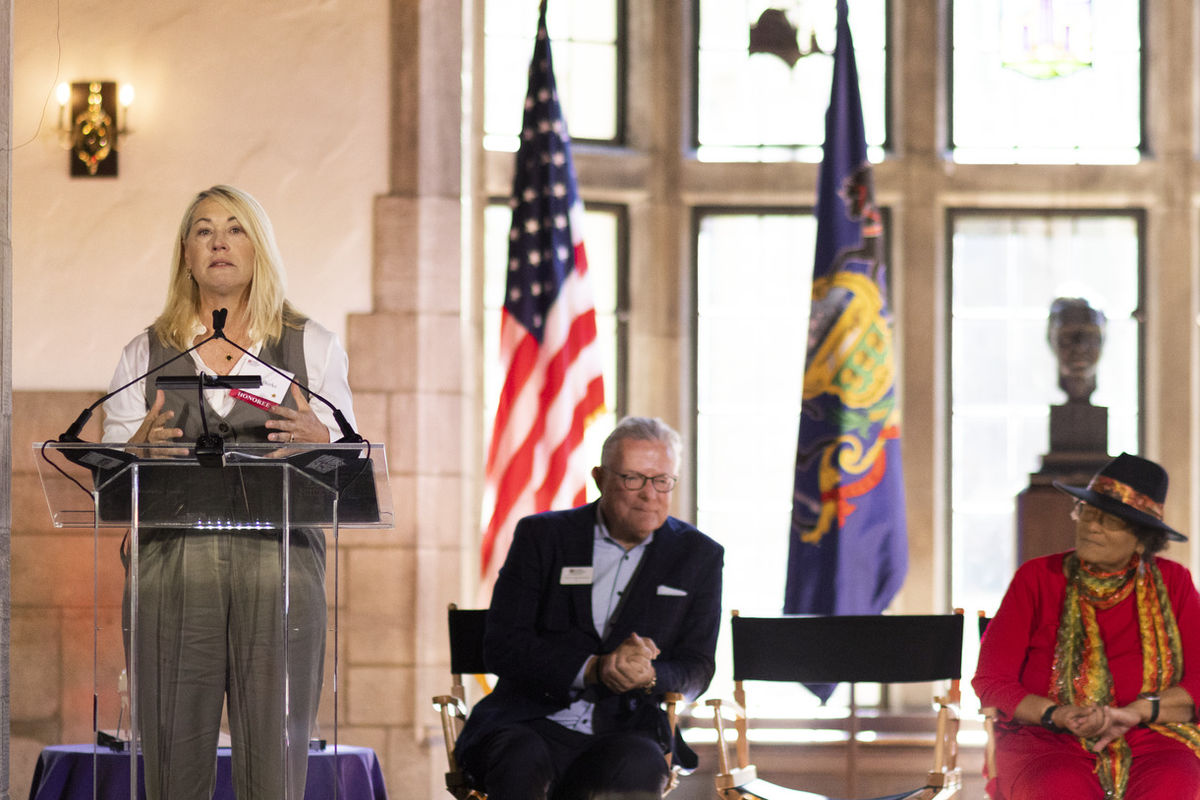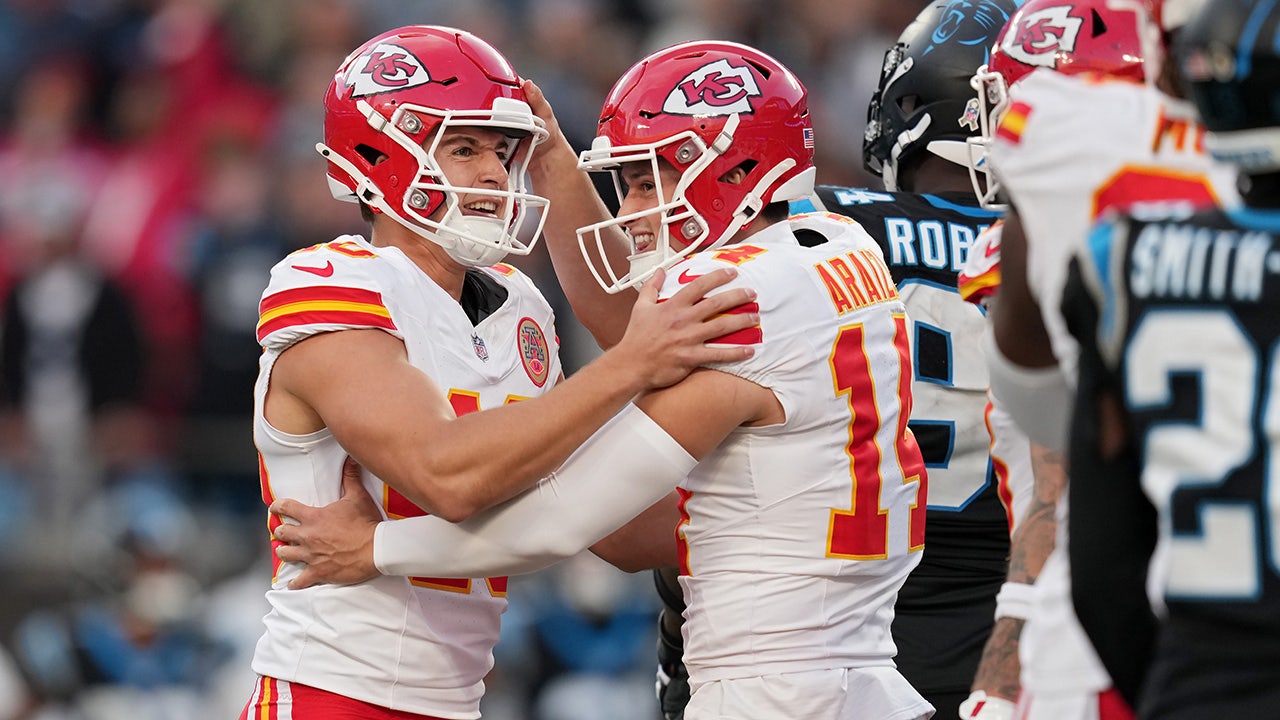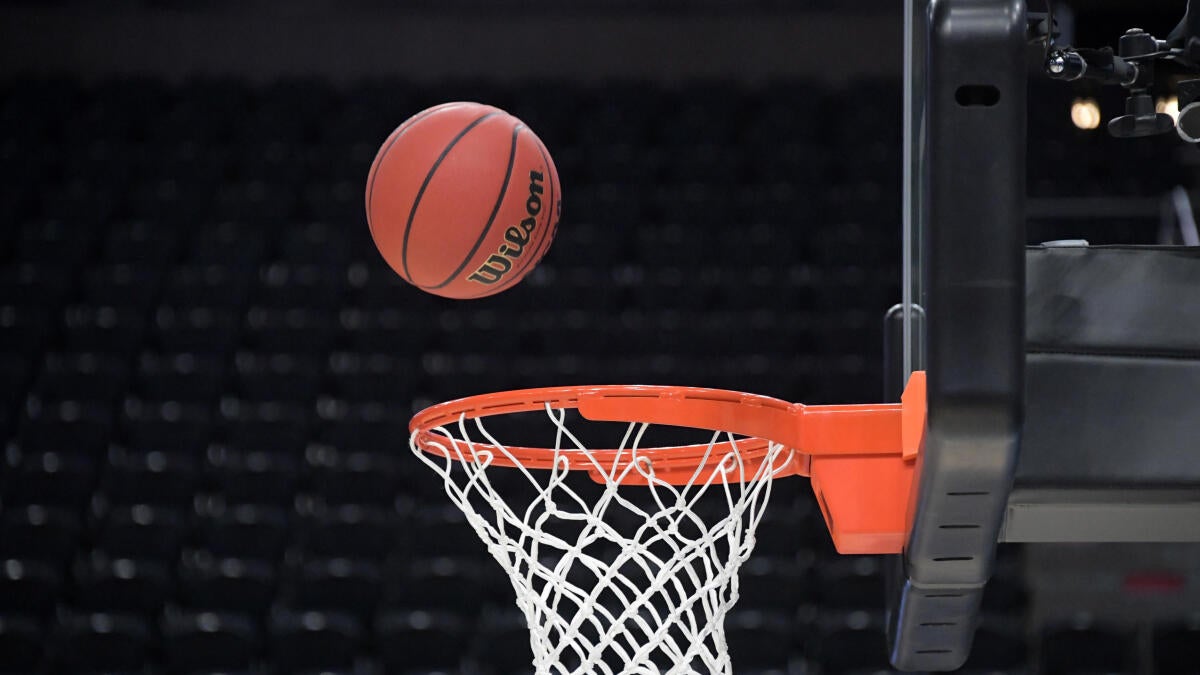Sports
Temple hosts the inaugural Women in Sports Media Symposium

Students, faculty, alumni and members of the media packed into Mitten Hall on Friday, Oct. 18, for the inaugural Women in Sports Media Symposium hosted by Temple University’s Claire Smith Center for Sports Media. The all-day event was a celebration of the devoted women and their male allies who, like Claire Smith, KLN ’79, fought and continue to fight for the fair treatment of women and people of color in a male-dominated industry.
The mission of the day was perhaps best spelled out by David Boardman, dean of the Klein College of Media and Communicaton, who presented a startling stat: 83% of people working in sports media are male, and 86% are white.
“We aim to help change that here at the Claire Smith Center,” Dean Boardman said in his opening remarks.
“Today marks a new landmark in that pursuit. It was 40 years ago, almost to this day, that Claire was rudely pushed out of the San Diego Padres locker room as she was covering game one of the 1984 National League Championship Series. What a wonderful opportunity that presents for us today to really examine the role of women in sports media and to ask ourselves and each other: What’s changed over those 40 years, and what hasn’t?”
Smith is a professor of journalism at Klein and an award-winning baseball sportswriter whose career has spanned more than four decades. The story of her removal from the Padres locker room came up multiple times throughout the event, as did similarly sobering stories from other women in sports media.
In the first panel of the day, Smith was joined by Melissa Ludtke and Lisa Saxon, two of Smith’s contemporaries who battled discrimination throughout their sports writing careers.
Ludtke was denied access to both the Los Angeles Dodgers and New York Yankees clubhouses while covering the 1977 World Series. She then served as a plaintiff in the subsequent lawsuit against Bowie Kuhn, the commissioner of Major League Baseball at the time. Ludtke won the landmark lawsuit, which is credited with providing equal access to MLB locker rooms for women reporters. However, women in the industry, including Smith and Saxon, quickly learned that their fight for equality in the locker room and on the sidelines was far from over.
“I remember reading about [the lawsuit] and thinking, okay, we’re good to go!” said Saxon, who was a senior in high school at the time. “But then I got out there and found out, no, there was still quite a bit of work to do.
“I was 19 years old when I was hired as a full-time reporter at the Daily News in Los Angeles,” Saxon continued. “I went to my desk and the nameplate on it said ‘token female.’ So, the stage was set right away. I was more of a show-and-tell toy, and someone who met an affirmative action mandate for the corporation.”
The second panel shifted the focus to women in the sports media industry today, who noted that while progress has been made, today’s women sportswriters and broadcasters still face challenges, especially with the addition of social media.
“There’s almost this magnifying glass over women in sports, and they’re waiting for you to make a mistake,” said Bella DiAmore, KLN ’22, associate sports editor at the Philadelphia Inquirer. “If you make one mistake, you’re going to get called out for it immediately.”
“No benefit of the doubt whatsoever,” agreed Alexa Ross, KLN ’18, a sports reporter for CBS 4 Indianapolis. “Each time I’ve leveled up in my career I’ve been like, the hate is going to get worse. That is the first thing I think before I can be excited, and that’s the thing that scares me from taking the next step.”
“There’s an element that somehow, just because we’re a still a minority in this field, each one of us represents every single woman that works in sports media,” added Gina Mizell, Sixers beat reporter for The Philadelphia Inquirer. “If any woman in sports media screws up anywhere, somehow it is a reflection of all of us, and so you don’t want to be the one that’s responsible.”
Of course, the event’s speakers and panelists also celebrated the many triumphs that women in sports media have made despite these challenges. One of those trailblazers is Doris Burke, an NBA broadcaster for ESPN who made history as the first woman analyst for a championship game in one of the four major American sports leagues during the 2024 NBA Finals.
“There is, of course, a very famous story where [Claire Smith] is removed from a Major League locker room, but I also cannot imagine some of the more insidious and perhaps subtle things you endured in the course of your career,” said Burke, who was in attendance to receive the inaugural Claire Smith Trailblazer Award. “And by doing so, Claire, you made my life easier.
“She celebrated the men she covered, and their gifts and their stories. And she focused on her allies,” Burke continued. “If the deep cultural biases in this country are going to change, it takes all of us. It takes extraordinary women like Claire, and the athletes we cover, and the GMs, and the executives, and the players associations.”
Doris Burke was on Main Campus on Oct. 18 to receive her Claire Smith Trailblazer Award. A celebrated NBA broadcaster for ESPN, Burke returned to Philadelphia a few nights later to call the Philadelphia 76ers home opener. (Photography courtesy of Ryan S. Brandenberg)
Another award, the Claire Smith Allyship Award, was presented to a male recipient who has played a role in supporting women in sports media careers. The inaugural recipient was Steve Garvey, former first baseman for the Los Angeles Dodgers and San Diego Padres. Garvey rushed to Smith’s aid on that fateful night in 1984.
“Steve came out of the locker room and said a simple phrase that saved my career,” said Smith, who is the founding executive director of the sports media center named for her. “He said, ‘I’ll stay here as long as you need. But get yourself together, you have a job to do.’ And I did have a job to do, and I’m still doing that job 40 years later because someone had the courage to swim against the tide on many, many fronts—to believe in equity and inclusion, and someone’s right to do a job.”
Following the panel discussions, students were invited to ask questions to the pioneering media titans gathered for the event. There was a theme of optimism among the panelists, who trusted that the students in attendance would be a part of the next wave of stars and trailblazers.
“What I see in you is the hope that I have, and everyone in my generation has, that you will have the answers to not only revive this industry, but make it thrive,” Smith said. “You have allies, you have people who’ve paved that path for you already like Doris and Melissa and Lisa and myself. This is a sisterhood, and it’s growing, but you’re not a faceless nameless person in that sisterhood. We see you, we hear you and we are here for you.”








